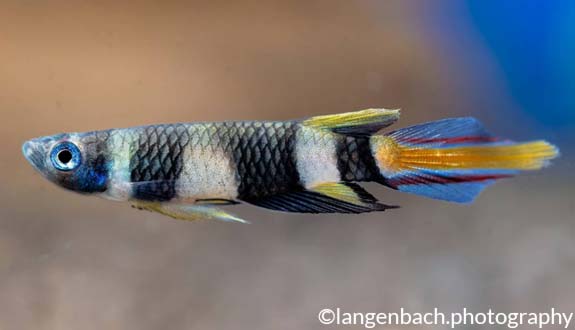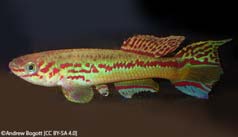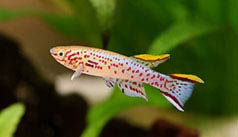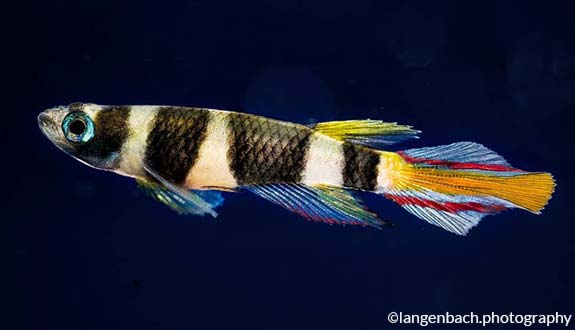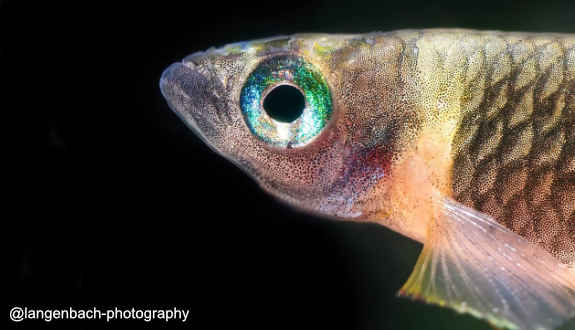

Alternative species (click on the thumbnail to see the card)
Names
Scientific name
Epiplatys annulatus
Pseudepiplatys annulatus
Aplocheilus annulatus
Haplochilus annulatus
Panchax annulatus
Common name
Clown killi
Banded panchax
Origin

Origin: Southeast Asia, Sri Lanka, India, Indonesia, Bangladesh
Biotope: Asian
Dimorphism
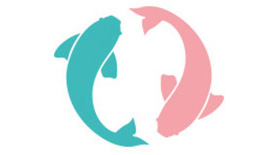
The female is slightly smaller than the male. Her fins are not colored like the male's. The male's fin is sharper.
Group
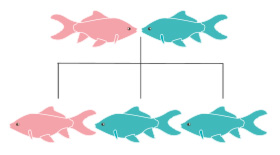
Cynolebiidae (Aplocheilidae)
Volume

50 L / 11 imp gal / 13 US gal
Parameters

T°: 25 to 27°C or 77 to 81°F
pH: 6 to 7
Hardness: 1 to 5°dGH
Difficulty
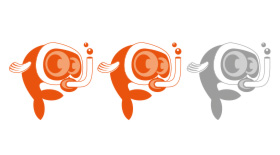
Average
Size

Female: 3cm (1.2") - Male: 4cm (1.6")
Longevity
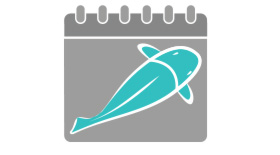
2 years
Living zone
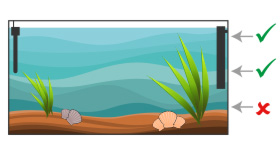
Middle and top
Individuals

10
Food
How to feed the Epiplatys annulatus?
Food
How to feed the Epiplatys annulatus?
Strictly carnivorous, you will have to plan to feed this fish mostly with live prey that can fit the size of its small mouth. It feeds mainly on the surface. You can propose: artemia nauplia, cyclops, Grindal worms, young fruit flies, cut tubifex, mud worms, daphnia, springtails...
Behavior
What kind of behavior does the Epiplatys annulatus have?
Behavior
What kind of behavior does the Epiplatys annulatus have?
The group will establish a hierarchy by means of parades but rarely going as far as physical confrontation. This hierarchy is very strong, and the dominant male has the first breeding lead. The last one is virtually deprived of this activity. Finally, even though they are not strictly speaking territorial fish, the males know how to make each other respect them.
He is not really shy and shows himself easily.
Cohabitation
Who can live with the Epiplatys annulatus?
Cohabitation
Who can live with the Epiplatys annulatus?
Keep this species preferably in a specific aquarium. It is possible to maintain a trio in 10 / 15 litres. However, for natural behaviour, a dozen individuals kept in an aquarium of at least 50 litres will be ideal. Compose your group with a ratio of one male to two or three females.
For maintenance with other species, choose small, peaceful fish that like stagnant water (no Cory doras!).
Breeding
How to breed the Epiplatys annulatus?
Breeding
How to breed the Epiplatys annulatus?
The reproduction of this species is done in trio or small groups. Count 1 male for 2 or 3 females, all at least 6 months old (sexual maturity). Prepare a breeding aquarium between 20 and 50 litres (depending on the size of the group) in which you will put floating plants and a thick Java moss. To encourage the presence of microfauna in this aquarium, put a few grains of paddy rice in it. The recommended water parameters for rearing fry are: temperature at 25/26°C, pH at 5.5 and hardness at 3°dGH.
During spawning, the female releases her eggs one by one until she runs out of them. She usually disperses her eggs among plants and roots. The eggs are about 1 mm long and have a short filament that allows them to attach to the decoration. Incubation lasts between 8 and 10 days depending on the temperature (10 days at 25°C).
At birth, the tiny fry tend to stand close to the surface, along the walls. They can be difficult to see unless you look at them from above: they have a metallic spot on their head that is clearly visible.
The parents do not attack the eggs but may chase away the fry. To avoid this, retrieve your fry and isolate them in the small aquarium described above. Beware, there is predation of older fry on younger litters, which may cause you to sort your fry by size and distribute them in different aquariums. Growth is quite slow.
Feeding of the fry: infusoria, paracemia and then artemia nauplia after 8 to 10 days.
Its aquarium
Which aquarium for the Epiplatys annulatus?
Its aquarium
Which aquarium for the Epiplatys annulatus?
In the wild, this fish can be found in congested environments with low water levels. The watercourse is calm and free of violent currents.
To reproduce its natural biotope as well as possible, put many floating plants in its aquarium. The ground will be composed of peat. To perfect the decor, many branches and roots will offer reassuring hiding places for the fish.
It is imperative to cover your aquarium because this fish jumps quite often. Also think of protecting them from the lighting system to avoid burns.
Being quite sensitive to the quality of its water, you will have to keep your fish in very clean water. To do this, change the water very regularly (1/3 of the volume every 15 days).
Good To know
Find all additional information!
Good To know
Find all additional information!
Surprisingly enough, some aquarists report great difficulty in maintenance while others find it very easy. It all comes down to respecting one's needs, especially in terms of water chemistry.
The colouring of these fish is very variable and there are differences in the colour or position of the bands, even within the same population. These 3 variations can nevertheless be noted:
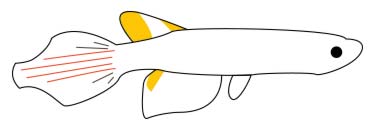
> Conakry - origin: Guinea. It is the least colored variant. In the male, the dorsal and anal fins show a yellow/orange triangle. Very rare to be found in the aquarium trade.

> Kasewe forest - origin: Sierra Leone. In the male, the dorsal fin has a shiny orange/red triangle on the front.
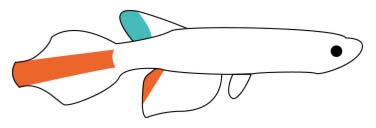
> Monrovia - origin: Liberia. The dorsal fin has a brown/blue triangle and the anal red/orange.
Its name "Epiplatys" comes from the association of the Greek words "epi" which means above and "platys" which means flat. A very appropriate name for this fish with a flattened forehead!
Yours photos!
Comments
Sort by:
Please login to post comments
